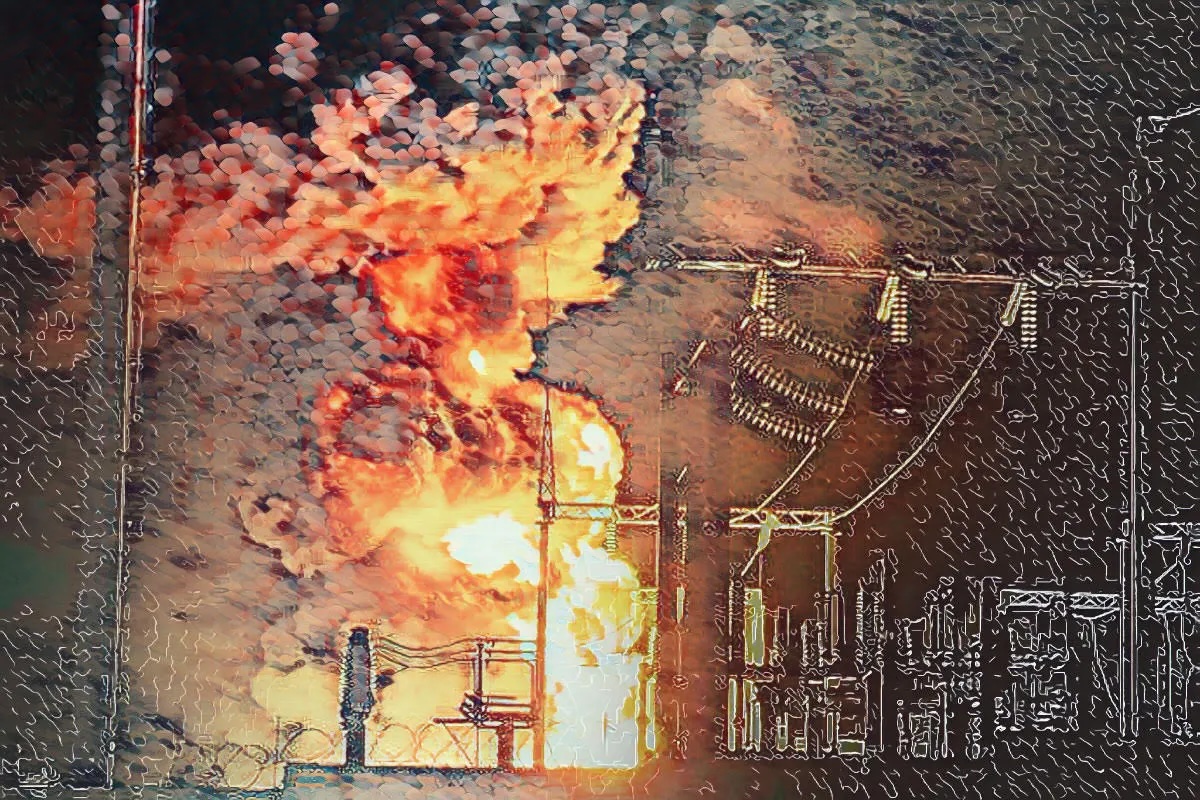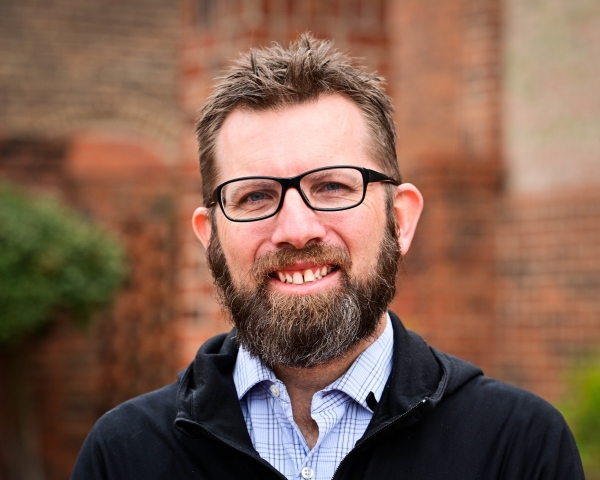Jordan Green wins August Sidney for Spotlighting Neo-Nazi Militant Accelerationism
Jordan Green wins the August Sidney Award for his feature in The Assembly, “I’ve Seen How the Neo-Nazi Movement Is Escalating. You Should Worry.” In early 2024, Green sat in a hotel room with his wife and children, watching home security footage on his cellphone. An FBI agent had warned Green to leave his home, and with good reason. A group of notorious neo-Nazis were throwing stiff armed salutes outside his house. One of them served prison time for distributing bomb-building instructions. Another was accused of ordering a hit on a journalist. Yet another had been inside the Capitol during the January 6th insurrection.
Their display was retaliation for Green’s efforts to report on neo-Nazis, which grew out of his investigation into the attack on two electrical substantions in Moore County, N.C. in December 2022, casting 40,000 customers into darkness for the better part of a week. An 87-year-old woman died after her oxygen machine lost power and her death was therefore ruled a homicide. If the perpetrators are brought to justice, they could be charged with murder. Various neo-Nazi social media accounts claimed the substation attacks were intended to shut down a drag show in the town of Southern Pines, N.C.
Substation attacks are an increasingly popular tactic linked to an ideology known as militant accelerationism, a neo-Nazi doctrine that terrorism is necessary to usher in a white ethnostate. Militant accelerationism has been linked to murders, infrastructure attacks, and other violence. The nerve center of the accelerationist movement is Terrorgram, an online production collective that grooms young people to commit racially motivated mass shootings and infrastructure attacks. “Ultimately, whatever the cost, I believe with all my being that the world needs to understand the threat of militant accelerationism,” Green writes.
“Jordan Green has shined a spotlight on the increasingly violent and well-armed neo-Nazi movement and its campaign of violence and intimidation against marginalized people and the press,” said Sidney judge Lindsay Beyerstein.
Green is an investigative reporter based in North Carolina. He is a writer for Raw Story and much of the reporting for this piece was undertaken by the publication. His reporting on far-right extremism has spanned from Charlottesville to Jan. 6, and he is currently working on a book about militant accelerationism. Founded in 2021, The Assembly is an online news source that publishes deep reporting on power and place in North Carolina.

Backstory
Q: How did you find yourself on the neo-Nazi beat?
A: I started reporting on far-right extremism following the 2016 election when a local Ku Klux Klan group announced a “Trump victory parade” outside of Greensboro. That led me to a crash course on the various factions of the far-right, including mainstays such as the Oath Keepers and Three Percenters, the then-ascendant Proud Boys, and neo-Confederates, who were mobilizing across the South to oppose the removal of Confederate monuments. Roughly a year after the Unite the Right rally, the Tree of Life synagogue shooting in Pittsburgh and other terrorist attacks focused my attention on the growing threat of accelerationism.
Q: Describe how six neo-Nazis descended on your home because of your reporting?
A: During the course of preparing an investigative report about 2119, a teenage neo-Nazi youth gang, I experienced an escalating wave of harassment through the internet and by phone. Before that, I had been doxed, with my home address being shared on a neo-Nazi chat on Telegram, a social media platform popular with extremists. During this period, an unsolicited pizza was delivered to my house, and an enlisted soldier from Fort Liberty parked on the street in a pickup took a photo of me with a camera equipped with a telephoto lens. I found the photo posted on a Telegram chat popular with 2119 members.
A couple weeks before publication of the 2119 investigation, I received a tip from an FBI agent that I should expect an unfriendly visit and it would be a good idea for my family and I to leave our home. We booked a room at a hotel in downtown Greensboro. Six Nazis from South Carolina and Tennessee, along with North Carolina, converged at a park near our house. They walked through the park and held a brief flash rally on the street in front of our house. Sean Kauffmann, leader of the Tennessee Active Club, stood in the middle holding a sign reading, “Freedom of press ≠ freedom of consequence.” Three other Nazis flanked him, holding lit emergency flares. Kai Nix, the soldier who had photographed me a month earlier, documented the stunt with a camera.
Q: The goal of the attack on the substation was to shut down a drag show. Can you elaborate on how today’s neo-Nazis use LGBTQ issues, particularly trans issues in their propaganda? I’ve read that they often use resentment of trans people as a wedge issue to attract normies to Nazism, is there any truth to that?
A: In my experience, neo-Nazis and other white supremacists exploit any issue where there is significant social tension to advance their agenda, whether it’s LGBTQ+ rights or immigration. As you note, they use such issues as a bridge to recruit mainstream conservatives. Neo-Nazis also view LGBTQ+ people, particularly trans people, as an inherent threat to patriarchy and their quest to increase white birthrates. In their conspiratorial view, a constellation of groups, with Jews at the top, including LGBTQ+ people, immigrants, Muslims, Black and Brown people, liberal politicians, epidemiologists, academics and journalists are arrayed against in a plot to destroy the white race. Neo-Nazis look at an attack on any of these groups at the moment of their greatest perceived vulnerability as a strategic opening to erode trust in institutions and ratchet up fear.
Q: An 87-year-old woman on oxygen died because the power outage knocked out her breathing apparatus. The coroner ruled her death a homicide. Who, if anyone, has been held responsible?
A: The Moore County substation attack remains unsolved, and no one has been charged, to date. While Karin Zoanelli’s death has been ruled a homicide, no one has been held responsible.
Q: What is militant accelerationism?
A: Militant accelerationism, as a tendency within the white power movement, is the belief that electoral politics and mass mobilization are useless in the struggle to advance the interests of the white race. As a result, adherents of this ideology believe terrorism is necessary to bring about a collapse of society and lay the foundation for a future white ethno-state.
Q: How does today’s neo-Nazi movement compare to a decade ago?
Ten years ago, what was then known as the “alt-right” was a largely online movement that, emboldened by Donald Trump’s rise, was getting ready to step into the real world. The alt-right’s coming-out party during the Unite the Right rally in Charlottesville, Va. in August 2017 was a catastrophe for the movement. The murder of Heather Heyer after Unite the Right led to a public-relations backlash, and to legal and financial setbacks. As a result, the movement split into two strains. The optics-oriented strain, exemplified by Nick Fuentes and the Groypers, sought to co-opt and shift the GOP further to the right. The other strain, which has come to be known as accelerationism, went underground and embraced terrorism.
The accelerationist tendency was primed for expansion after Unite the Right due to global networking on a website called Iron March that was active from 2011 to 2017. The accelerationist movement also drew inspiration from a collection of writings called Siege by James Mason, along with the Manson murders and Satanism. Mass shootings targeting Jews at the Tree of Life synagogue in Pittsburgh, Muslims in Christchurch, New Zealand, and Latinos at a Walmart in El Paso, Tex. exemplified the upsurge in neo-Nazi terrorism ca. 2018-2019.
A law enforcement crackdown against organized accelerationist groups such as Atomwaffen and the Base in 2019-2020 prompted neo-Nazis to adapt through decentralized networks that lean heavily on online propaganda. The central hub of this movement is Terrorgram, an online production collective that recruits impressionable young people to carry out racially motivated mass shootings and attacks on infrastructure. Meanwhile, militant accelerationists motivated by Nazi ideology are cross-pollinating with nihilistic online networks that sexually exploit children and encourage violence. Similar to previous generations, the terrorist wing of the neo-Nazi movement also has a public-facing component comprised of Patriot Front and the Active Club, both of which evolved out of groups that participated in Unite the Right.
Q: What kinds of tactics are neo-Nazis using against yourself and other journalists on the anti-hate beat?
A: Doxing by publishing one’s home address is a common tactic that neo-Nazis use against journalists. In recent years, neo-Nazis have been prosecuted for carrying out swatting attacks — falsely making emergency calls to elicit a law enforcement response — against journalists, and making online death threats. In one incident, neo-Nazis plotted an arson attack against an antifascist podcaster, and showed up in person, only they mistakenly targeted the wrong house.
Q: One of the Nazis on your lawn was inside the Capitol during the insurrection of January 6th, with his mom, who was later arrested for her role. Were mother or son among those pardoned by Donald Trump?
A: David William Fair, who was part of the group of Nazis that held a flash rally in front of my house, was a juvenile at the time he went inside the Capitol, so he was not charged. Fair’s mother, Christina Praser-Fair, was charged with disorderly and disruptive conduct and other violations for going inside the Capitol on Jan. 6. Like almost 1,600 other defendants, Praser-Fair received a full pardon from President Trump in January 2025.


